03.13.10
Posted in General News, Weather News at 11:28 am by Rebekah
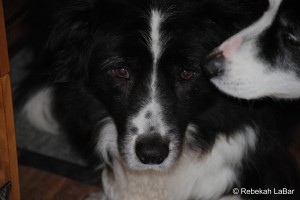
The Iditarod Trail Sled Dog Race is underway in Alaska.
Last Saturday, 71 teams set out from Anchorage on their approximately 1,100-mile-long journey to Nome. As of today, the leading musher, Jeff King, is well over halfway done with the race.
Although there is currently an extratropical cyclone in the Gulf of Alaska, it looks like snow and blizzard conditions will be limited to southern Alaska. On the other hand, there will be no shortage of cold weather for the mushers and dogs!
It’s currently 28 below in Nome, and the NWS is calling for a high today of 10 below. Yesterday, tonight’s low was forecast to be 25 below with a wind chill of 50 below, but today it’s been updated to only 20 below with a wind chill of only 40 below! No wonder most of the mushers come from Alaska–there are probably few other people that could withstand the cold. 🙂
According to the National Climatic Data Center, Nome’s average high in March is 17.7 °F and average low is 0.5 ºF. The record cold temperature for Nome, not including wind chill, is -54 ºF (records date back to 1900).
For more information on the Iditarod, and up-to-date information on the current standings and location of the teams, check out the official site of the Iditarod.
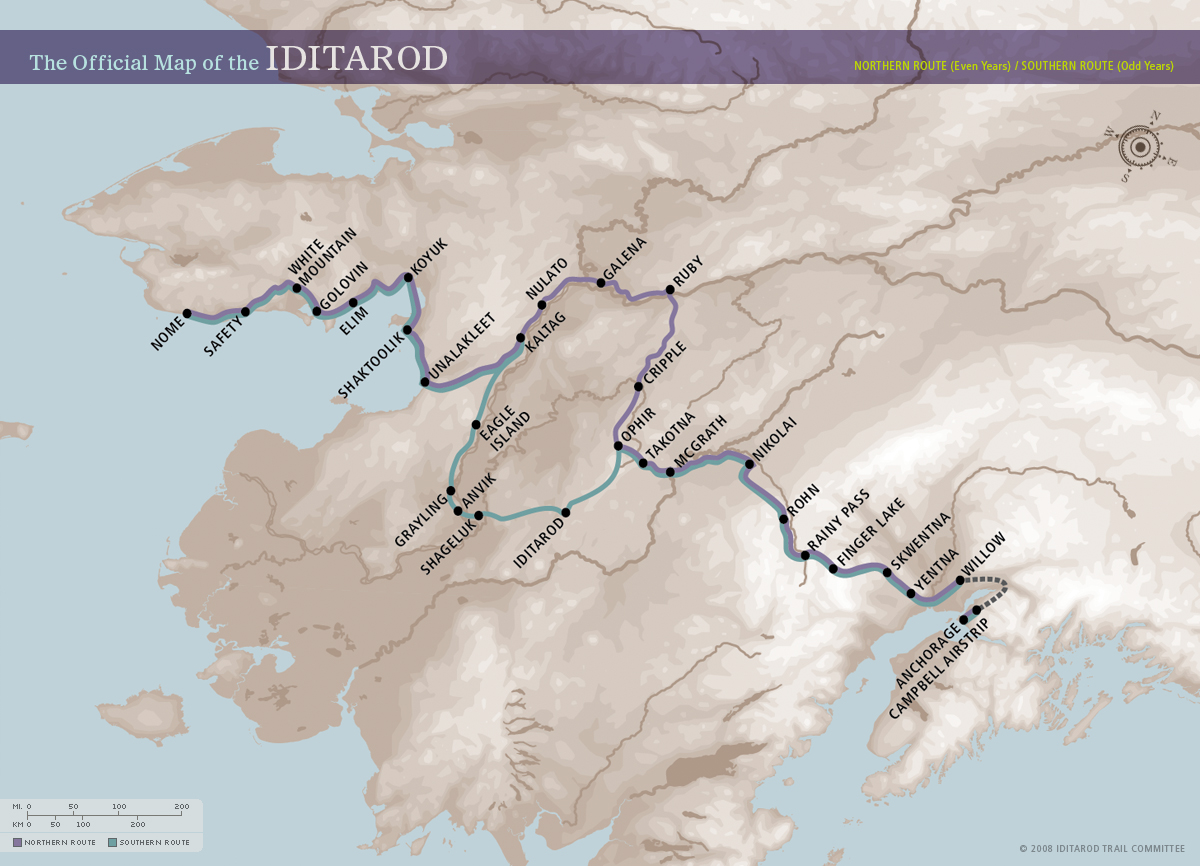
Iditarod route; this year the teams are taking the northern route. Courtesy of The Official Site of the Iditarod.
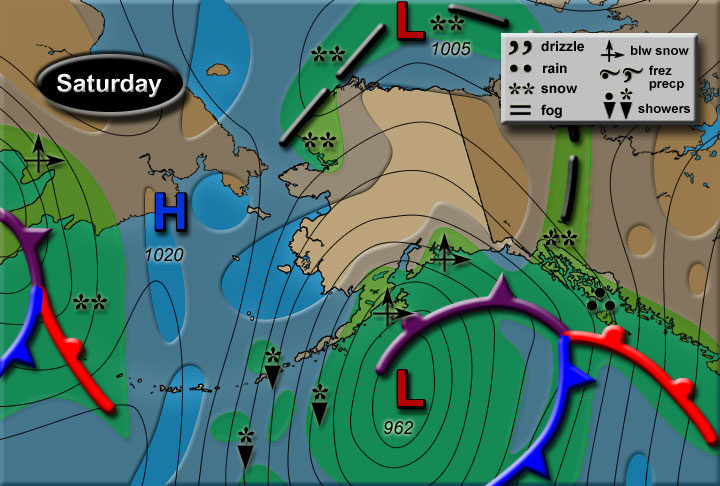
Alaskan weather forecast for today. Courtesy of the National Weather Service in Anchorage.
Permalink
03.12.10
Posted in Uncategorized at 6:01 pm by Rebekah
As storm chasing season begins again, I thought I’d share a few storm chasing tips, including what I wish I knew before I went on my first storm chase. 🙂
- Don’t forget to bring food. The most common time for tornadoes to form is in the late afternoon and early evening, and tornadoes don’t wait for you to make a run to Taco Bell. I often find that when I’m in hot pursuit of a tornadic supercell, I don’t start to get hungry until well after my normal meal time; however, it’s nice to have at least a healthy (or sometimes not so healthy?) snack on hand for when you do get hungry.
- Hydroplaning is the number one danger while storm chasing. Tornadoes? Dangerous if you’re in their path, but not too bad as long as you don’t get too close, stay away from flying debris, keep them in sight, and know where they’re going. Lightning? Not a big deal if you stay in your car, but still dangerous. Heavy rain? Now THAT’s scary! Rain makes it very easy for drivers to hydroplane. On my second storm chase, a fellow chaser rear-ended the car I was riding in. Slow down and watch where you’re going.
- Be patient. Storm chasing is not all action. In fact, sometimes there is much more sitting around and waiting for storms to form in your target area than actual driving.
- You won’t see a tornado every time. This goes along with #3; even in the Plains, the chances of a tornado hitting any one place are pretty small. Even if you’re a good forecaster and an experienced chaser, sometimes you will have bust days with no storms and sometimes you will have bust days where there are tornadoes just a few miles from you.
- Take maps, even if you have a GPS. Sometimes, technology fails. Actually, lots of times, technology fails. Even if you have a great GPS that has never failed you and very likely never will fail you, you don’t want to be in a sticky situation when something happens to it. Always take paper maps, either as your primary or secondary source. Oh yes, and always have an escape route handy–few things in life are scarier than being sandwiched between a tornado and a large hail core, and not having a way out.
- Chase with a full tank of gas. This kind of goes along with #1. It’s frustrating and dangerous to be chasing a tornado when you’re in the middle of nowhere Kansas and low on gas.
- Don’t pull off the road unless there is a shoulder or very dry dirt. That should go without saying. In the heat of the moment, though, it’s easy to forget. I once needed to make a quick stop to adjust some equipment, so I pulled off the road onto a dirt/grassy area. Did I mention it was Oklahoma, where there is a lot of red clay? Oh, and did I mention that it had just rained, so the ground was soft? My car sank in about 8 inches of mud.
- Occasionally you may see a tornado. In contrast to #4, if you chase often enough, and learn to forecast well enough (or chase with others who know how), eventually you will very likely see a tornado. Wait a minute, isn’t that the whole point? Chasing is so hard, sometimes I hardly even believe I will ever see another tornado–even on a good day! I am actually surprised at how I am surprised whenever I see a tornado. I have seen about 15 tornadoes over the course of my short time chasing, and I have to tell you I am shocked and amazed whenever I see one. It’s an incredible feeling when you first spot that rotating column of air.
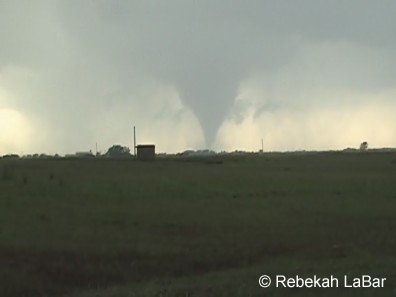
- Hail sales really do exist. I heard about these before I moved to Oklahoma, but I used to think they were just a joke. Cars get damaged by large hail in the Plains; it’s a fact of life, chasing or no chasing. When this happens in a car dealership, the dealerships often have a “hail sale”, where you can buy a new car pretty cheap–as long as you can live with some dents and perhaps a broken window. Hail is cool to see, but not fun to mess with–unless you enjoy having your car smashed, stay away from falling golf balls and baseballs.
- Don’t record video in a car without a dash mount or tripod. I have never got car sick in a car, even when reading. I do, however, get very nauseous when I watch chase videos that were recorded by someone holding a camcorder up to a moving car window, while traveling at 70 mph. By the way, this includes some of my own chase videos. Get a dash mount or tripod or something if you plan to film out of a moving car (or a really good camcorder that does well under these conditions). I recently bought a no-slip dashboard cushion for a GPS–only I’m going to use it for my camcorder instead. I already tested it, and it works great–I just place the camcorder in the flat part of the cushion, which I place on the dashboard, and the camcorder won’t even move when I go around corners.
- Chasing isn’t all fun and games. Finally, people’s lives are being affected by the storms we chase. I never realized this more than when I saw Greensburg being destroyed by a 1.7-mile-wide tornado a few years ago. At the end of the day, no matter what your reasons for chasing, and no matter how much you enjoy getting that thrill ride and those money shots–remember to stop and think about that building you saw fall apart, and even the corn field that you saw get ripped up. Yes, even though we root for tornadoes to go through open fields, a tornado could still be damaging someone’s crop and income for the year. Think about this before you start cheering on that tornado.
Permalink
03.11.10
Posted in Weather News at 4:12 pm by Rebekah
Severe weather is still occurring in Florida this afternoon, where at least one more tornado has already been spotted. Severe storms and steady rain are expected to continue for the next few days along the East Coast. What’s going on?
On Sunday, a shortwave trough entered California from the Pacific. By the time the surface low pressure system associated with the trough moved into southern Colorado Monday morning, the low had started to occlude. A surface low, a.k.a. extratropical or mid-latitude cyclone, generally starts to weaken when its cold front catches up to its warm front. Cold air is more dense than warm air, so it moves faster and eventually catches up to the warm front; this process is called occlusion. The tornadoes in Oklahoma on Monday occurred near the point of occlusion.
The last couple of days there has been some severe weather in the warm sector of the slow-moving cyclone; this is the relatively warm area between the cold front and warm front, south of the occluded front. Unfortunately the cyclone isn’t going anywhere fast, as eventually it will become completely occluded and just sit and spin away from the fronts.
I took a look at the GFS and NAM models today and noticed the ridge in the west and the ridge in the east are building and expected to merge above the upper-level low. This results in a large ridge of high pressure situated above a closed low. The GFS model further shows that a closed high may develop within the ridge, directly above the low. This is called a high over low block, or a “rex” block. There are several blocking patterns that frequently occur, all of which prevent pressure systems from quickly moving across an area. This particular type of block means that air will flow in an S-shape, clockwise around the high and then back counter-clockwise around the low. In other words, the low is in no hurry to go anywhere, and will only bring more rain to the East Coast (especially the Northeast). It looks like the rex block will be strongest over the weekend, before breaking up and allowing the low to progress out into the Atlantic.
GFS model forecast for Sunday at 12Z, at 500 mb, showing the ridge/high above the low in the mid-levels of the atmosphere:
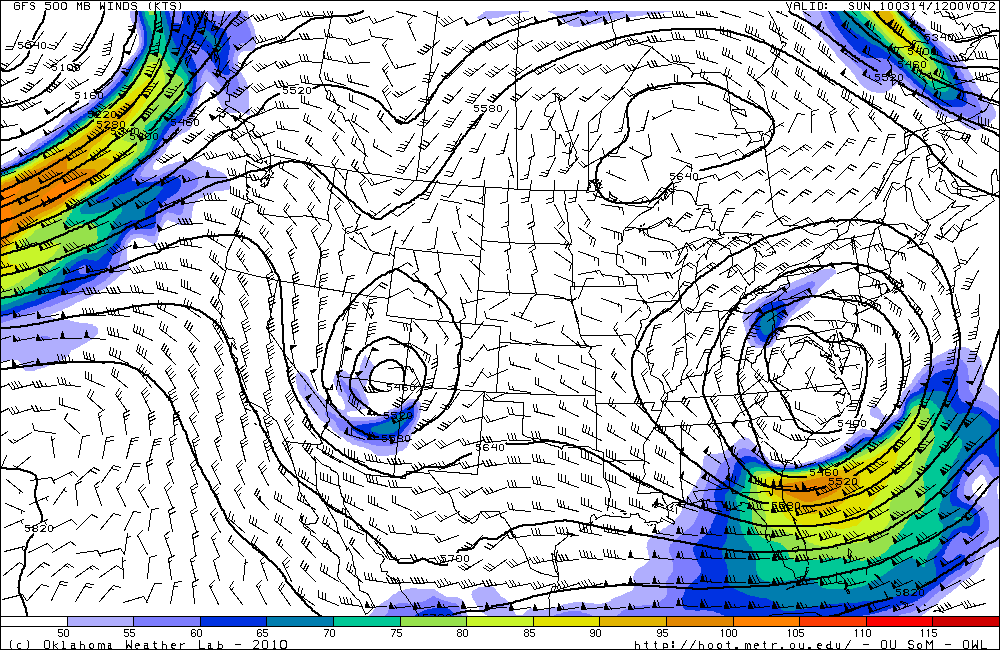
The GFS model also is starting to show a potentially decent severe storm setup over southern Kansas and Oklahoma next Friday…that’s still over a week away, so it will likely change by quite a bit. It may be an interesting setup to watch, though…
Permalink
03.10.10
Posted in General News, Severe Weather Forecast, Severe Weather Nowcast at 11:34 pm by Rebekah
I posted my chase log and photos from Monday on my website. See the homepage link on the right side of this page. Or click here.
A large upper-level low pressure system, associated fronts and a dryline, moderate instability, and ample wind shear are responsible for severe thunderstorms breaking out today from Kansas to Texas to Alabama. Five tornadoes have been reported so far in Arkansas and Louisiana, with more possible tonight in the Mississippi River Valley region.
A ridge of high pressure is building on the East Coast, and this is going to block the upper-low and keep it from moving out into the Atlantic for the next few days. This means more severe weather could be possible in the eastern US over the next couple of days.
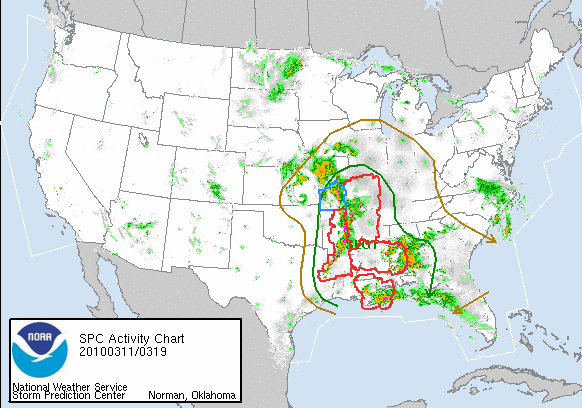
And now, for a special announcement–I have re-discovered Armor All. Sunday afternoon, in anticipation of chasing on Monday, I decided to thoroughly clean out my car. My dashboard was getting woefully dusty, and my trunk was a mess. The other day at Walmart, I saw some Armor All cleaning wipes and remembered that when I was a kid, my Dad wanted me to use Armor All to clean and protect the interior of our car. I don’t think I thought much of the product back then; probably because I didn’t always do the best job of wiping down the car. Or I just didn’t appreciate it. Anyway, I tried using the cleaning wipes on my dashboard on Sunday, and I was blown away. I think my car must have been really dusty and dirty, because I wiped down every inch of the dashboard, console, and door panels, and now–my car glows! Well, at least on the inside. So go out and buy some Armor All–it will make your car look new and happy again. Thanks, Dad. 🙂
Permalink
03.09.10
Posted in Uncategorized at 6:31 pm by Rebekah
Well…you win some, you lose some.
I set out from Norman at about 2pm with a fellow grad student. Based on the dismal outlook for the day, I was expecting to only see a few storms behind the main squall line, with perhaps some lightning and hail. And maybe a supercell.
Two squall lines formed early in the day; one was well ahead of the dryline and came through central Oklahoma during the late morning. The second squall line formed just along and ahead of the dryline, and was in western Oklahoma at about the time we left. We drove southwest on I-44, as the best wind shear, instability, and moisture appeared to be in southwest Oklahoma. An area of decent instability was in northwestern Oklahoma, near a surface low, but I didn’t feel quite as confident about that region. The clouds looked like they would clear out of southwest Oklahoma before northwest Oklahoma, providing the chance for more heating and instability in the southern region. This was a very tough decision, I might add.
By the time we got to Lawton, the clouds were clearing above us and we could see some cumulus clouds forming to our west. We drove west on Highway 62 to Altus. Along the way, we saw a cumulus congestus cloud grow into a low-topped thunderstorm with a nice anvil to our northwest. I told Jeff that that would probably be the storm of the day, but it didn’t look terrific, and we were hoping that more storms would form to the south and come up our way.
When we got to Altus, the storm was the strongest on radar, but it was about to cross I-40 and we likely wouldn’t have been able to catch up with it unless we made an immediate decision to go north and not waste any time. I have been burned in the past, however, by making a sudden decision to leave the best-looking area to go after a semi-bad-looking storm, only to have my initial target area produce the best storms. So after some deliberation, we decided to meander over to Braum’s for some chocolate milk shakes, and then go north on Highway 283.
I heard of some 1-inch hail reports on the large storm, but comforted myself with the fact that we likely would have other storms forming nearby, and we could actually play around with a smaller storm just to the south of the big one. North of the small town of Willow, I stopped for several minutes so that Jeff and I could get some photos. The sun was low in the sky, moving behind a cloud in the middle of the flatlands of western Oklahoma. To our north and east, we saw dark clouds and rain. We even saw an occasional lightning strike! It was quite a peaceful sight.
As we got back in the car, I decided to go due north on Highway 34 instead of continuing northwest on 283. I still hoped to catch some hail and more frequent lightning. However, much to our dismay, I turned on the radio and found out that the initial northern storm had already produced a tornado north of Elk City on I-40, and a second one was on the ground! Gutted, we knew we had missed the surprise show of the day, not 50 miles to our north!
Some chasers, having picked a more northern target, saw a beautiful, multi-vortex, stovepipe tornado that was on the ground for some 40 minutes or more before a second tornado touched down. The tornadoes were rated EF2 and EF0 as they damaged some buildings in Hammon and Butler, Oklahoma, but I didn’t hear of any serious injuries.
I am not sure why more storms didn’t form to the south; the greater instability was right about where we were, in southwest Oklahoma. Shortly before the tornado was reported, Storm Prediction Center forecasters issued a Mesoscale Discussion and said they expected a tornado might form considering the stronger vorticity in the area associated with the low. By the time the tornadoes formed, the greatest wind shear was well east of us, so I suppose this was the only hope for a tornado to form. Again, we were probably too far away to catch the storm in time from Altus, but I may always wonder if we could have! I have had little success chasing near lows, but live and learn. 😛
It was still a fun, relaxing chase…up until the point where we knew there was a tornadic storm and we wouldn’t be able to catch up with it…shortly after this, we decided to head home and saw a bit more lightning and a nice rainbow. The next storm setup may not be for another couple weeks…but of course many OU students are optimistic that something may occur during our spring break next week!
See this page for chase accounts and photos of the tornado from other storm chasers. See this page for information and photos from the National Weather Service on the storms and the damage survey.
I will post some non-supercell, non-hail, non-lightning, non-tornado photos on my website perhaps later tonight or tomorrow.
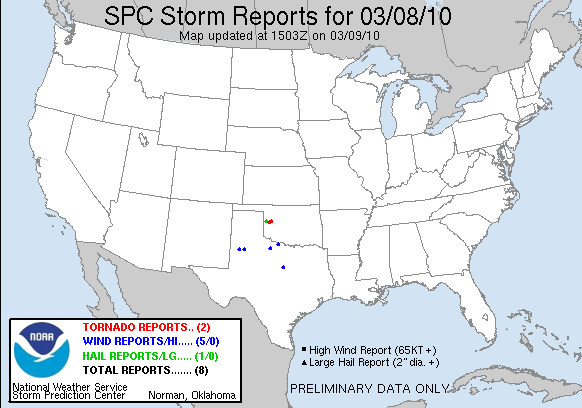
Permalink
« Previous Page — « Previous entries « Previous Page · Next Page » Next entries » — Next Page »






